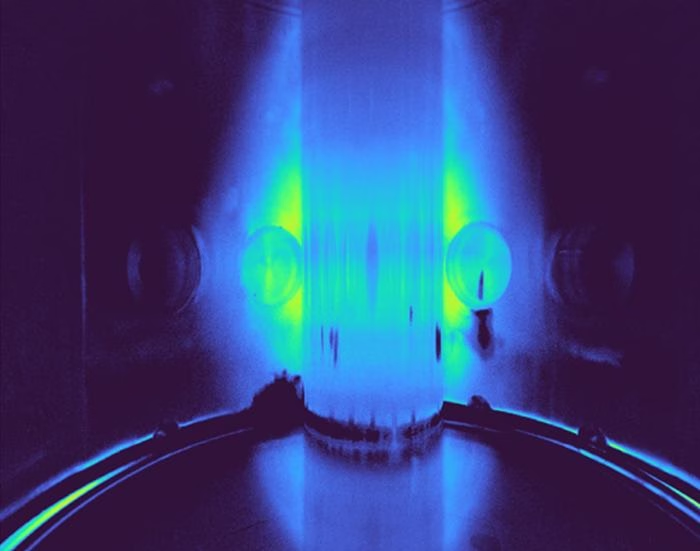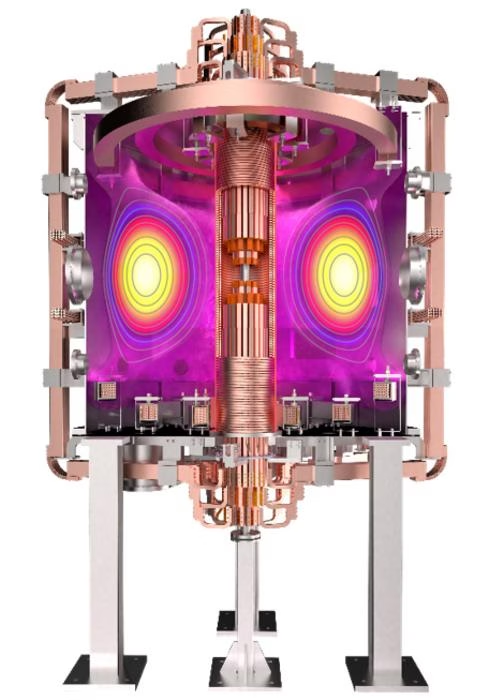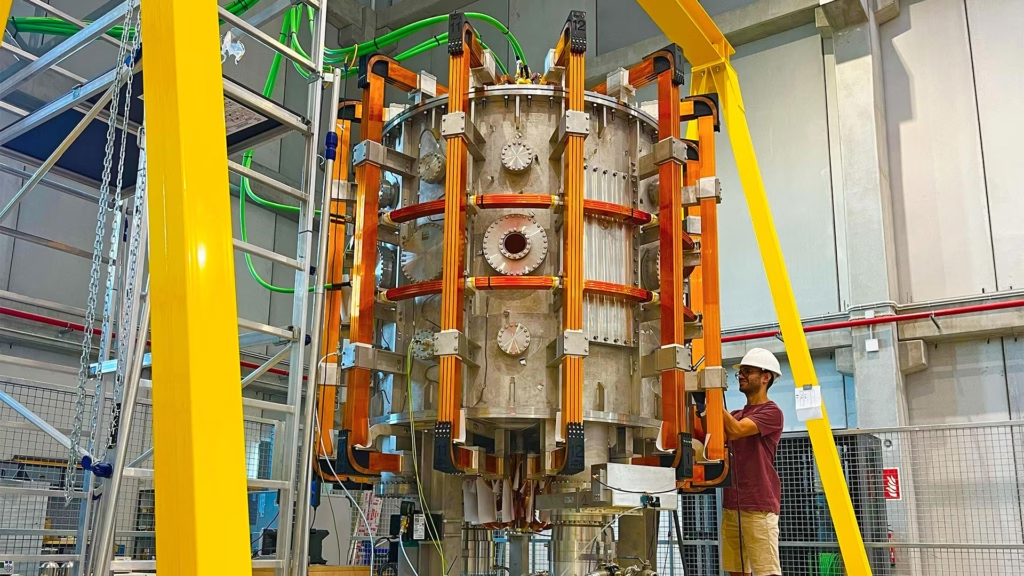Scientists at the University of Seville have inaugurated a revolutionary spherical tokamak, featuring negative triangularity that aims to unlock compact fusion power plants.
From Universidad of Seville 24/01/25 (first released 21/01/25)

In a pioneering approach to achieve fusion energy, the SMART device has successfully generated its first tokamak plasma.
This step brings the international fusion community closer to achieving sustainable, clean, and virtually limitless energy through controlled fusion reactions.
The SMART tokamak, a state-of-the-art experimental fusion device designed, constructed and operated by the Plasma Science and Fusion Technology Laboratory of the University of Seville, is a worldwide unique spherical tokamak due to its flexible shaping capabilities.
SMART has been designed to demonstrate the unique physics and engineering properties of Negative Triangularity shaped plasmas towards compact fusion power plants based on Spherical Tokamaks.
Prof. Manuel García Muñoz, Principal Investigator of the SMART tokamak, stated:
“This is an important achievement for the entire team as we are now entering the operational phase of SMART.”
“The SMART approach is a potential game changer with attractive fusion performance and power handling for future compact fusion reactors.”
“We have exciting times ahead!”
Prof. Eleonora Viezzer, co-PI of the SMART project, adds:
“We were all very excited to see the first magnetically confined plasma and are looking forward to exploiting the capabilities of the SMART device together with the international scientific community.”
“SMART has awoken great interest worldwide.”
When negative becomes positive and compact
The triangularity describes the shape of the plasma.
Most tokamaks operate with positive triangularity, meaning that the plasma shape looks like a D.
When the D is mirrored (as shown in the figure on the right), the plasma has negative triangularity.
Negative triangularity plasma shapes feature enhanced performance as it suppresses instabilities that expel particles and energy from the plasma, preventing severe damage to the tokamak wall.
Besides offering high fusion performance, negative triangularity also feature attractive power handling solutions, given that it covers a larger divertor area for distributing the heat exhaust.
This also facilitates the engineering design for future compact fusion power plants.
Fusion2Grid aimed at developing the foundation for the most compact fusion power plant
SMART is the first step in the Fusion2Grid strategy led by the PSFT team and, in collaboration with the international fusion community, is aimed at the most compact and most efficient magnetically confined fusion power plant based on Negative Triangularity shaped Spherical Tokamaks.
SMART will be the first compact spherical tokamak operating at fusion temperatures with negative triangularity shaped plasmas.
The objective of SMART is to provide the physics and engineering basis for the most compact design of a fusion power plant based on high-field Spherical Tokamaks combined with Negative Triangularity.
The solenoid-driven plasma represents a major achievement in the timeline of getting SMART online and advancing towards the most compact fusion device.


More info
You may also be curious about:
-

In chimpanzees, peeing is contagious
-

This metaphorical cat is both dead and alive – and it will help quantum engineers detect computing errors
-

Electrifying your workout can boost muscles mass, strength
-

Textbooks need to be rewritten: RNA, not DNA, is the main cause of acute sunburn
-

Deep learning designs proteins against deadly snake venom
-

Ordering coffee with your feet
-

Ancient genomes reveal an Iron Age society centred on women
-

World’s oldest 3D map discovered in cave
-

New giant sea bug named after Darth Vader tastes better than lobster
-

AI melds scans and patient notes to predict cancer prognoses and treatment responses
-

An earful of gill: Stem cell study points to the evolutionary origin of the mammalian outer ear
-

Eating fibre alters gene function giving anti-cancer effects
